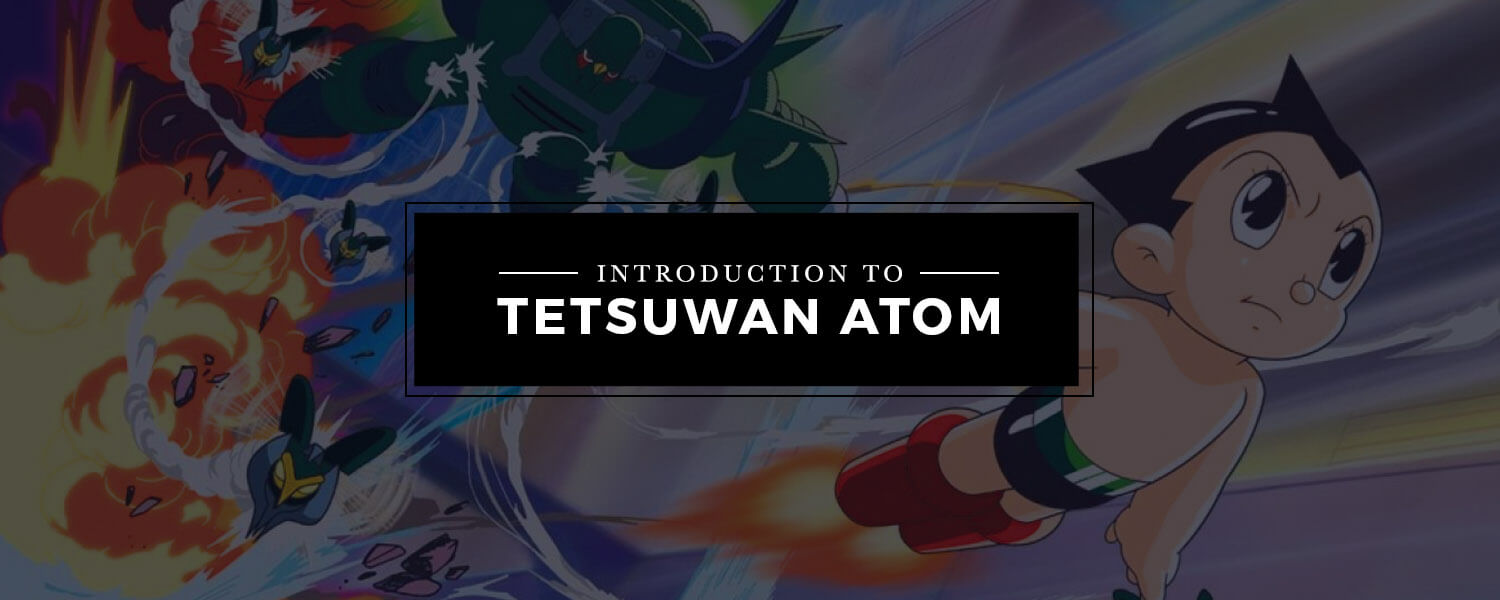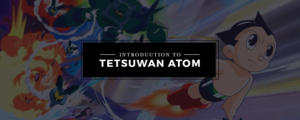KWEH!
After writing an article about Naoki Urasawa and his Pluto manga, I realized I had not made one for Tetsuwan Atom (or Astro Boy). Atom is Osamu Tezuka’s most popular child and is very famous in Japan. Despite that, the franchise does not receive as much appreciation overseas as more recent titles.
History
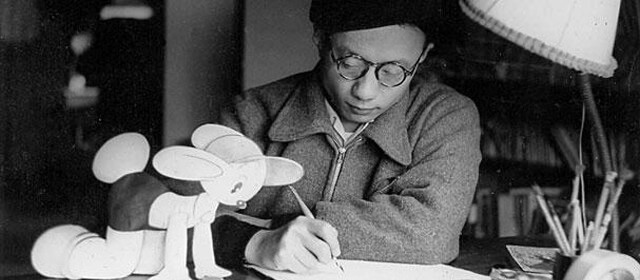
I can’t talk about the history of Astro Boy without talking a little bit about its creator. Osamu Tezuka (手塚 治虫, Tezuka Osamu) wrote Tetsuwan Atom from 1952-1968. As one of the pioneers of modern Japanese manga, Tezuka is often called “the god of manga” among other titles. He is one of the most productive manga artists to ever lived. Until his death, he produced hundreds of manga titles and received many national and international awards.
Tezuka established the early history of Japanese manga and anime that we all love. He also created the early Japanese animation production workflow that animators still use today.
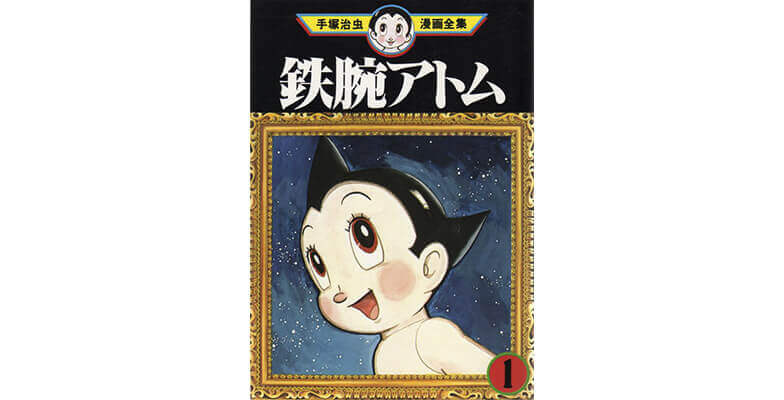
Tetsuwan Atom (鉄腕アトム, Tetsuwan Atomu, translated as Mighty Atom) is Tezuka’s groundbreaking work that set standards for many shounen manga and anime to come. It enjoyed many adaptations including: a 1959 live-action series of the same name, the 1963 first animated TV series that gave birth to the “anime aesthetic,” the 1980 reboot of the first animated series, and more.
Many different countries tried adapting the 1980 TV anime to their respective regions. The results were very mixed. Regardless, the name Astro Boy stuck around and has gained international recognition.
As of now, Hulu is streaming the 2003 reboot (yes, I am aware of the heavy edit and less-than-great music replacement) and, surprisingly, the 1963 original. If you happen to be subscribing to the service, please give this classic a go!
Its latest adaptation is a planned reboot with the production title “Astro Boy Reboot,” produced by Caribara Productions, Shibuya Productions, and Tezuka Productions. An announcement trailer regarding the project appeared in 2015 but there has been no further news yet.
Who is Atom?
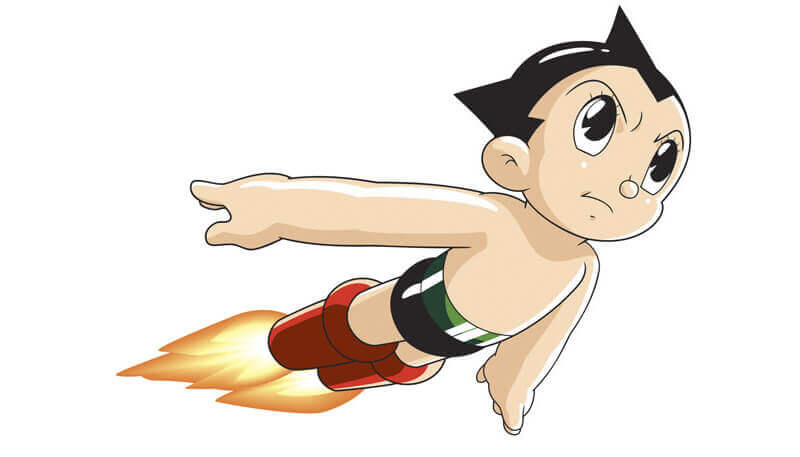
Atom is a robot boy created by Dr. Tenma as a replacement for his deceased son, Tobio. Though Atom is a near perfect robot boy, Dr. Tenma realizes that Atom will never be a true human child. Dr. Tenma sells the robot into a circus. In time, Professor Ochanomizu finds Atom in the circus (with some versions of the story saying Atom is treated badly). The kind lead person of the Ministry of Science takes Atom under his wing and nurtured him. Soon, the professor discovers that Atom is equipped with an arsenal of fighting powers and the ability to experience human emotions.
Atom is also has a conscience and is able to tell right from wrong. He has consistently been trying to help victims, both humans and robots, from other violent or human-hating machines. Thanks to Prof. Ochanomizu’s belief that humans and robots can coexist, Atom often fights to preserve the relationship between the two factions.
What I love about Osamu Tezuka’s Tetsuwan Atom
Tezuka’s creativity and imagination of Atom’s futuristic world was, and still is, astounding. His gadgets, transportation methods, architecture, and robot designs are fantastic and feel almost reachable. Though Tezuka created some of them for laughs and they may not function the way they are supposed to.
In the manga, Tezuka often inserts himself in the comic along with some commentaries about real world events, as well as his various thoughts about Tetsuwan Atom. That often breaks up the manga a little and reminds us that we are, in fact, reading a story. Those pseudo-intermissions offer some opportunities to learn more about Tezuka as a person and a creator.
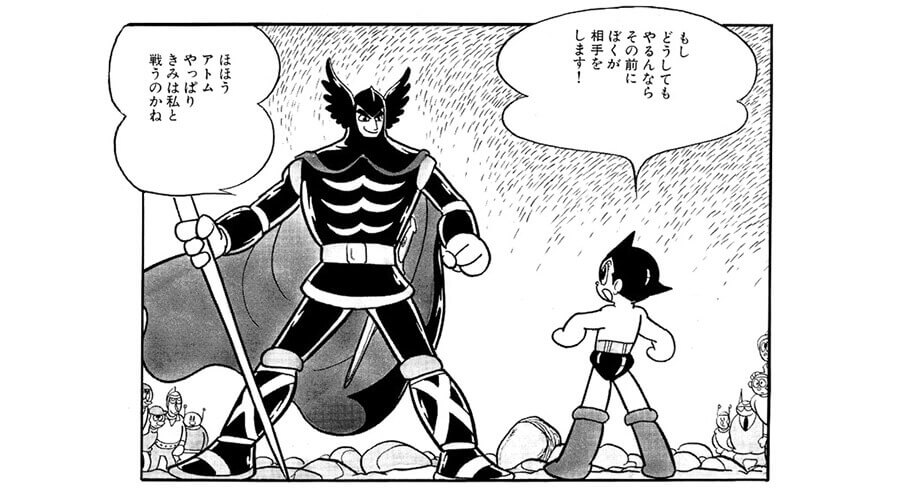
Astro Boy’s oft portrayal of discrimination and treating others differently because they are dissimilar still echoes today. Robots see humans’ act of self-preservation by creating rules to restrict robots’ activities as an oppressive act. That is why some extremist machines decide to use brute force to push back.
The story itself is an allegory about humans and how power affects us. It is also about how people view others differently. Additionally, I also see it as a metaphor how crudely we treat and value manufactured items. Some humans in the story have the mentality that since robots are made by people, they can be treated almost as disposable. Those people also see robots as not worthy of empathy because they do not have “real” feelings.
Despite many light-hearted moments, Tetsuwan Atom has a lot of darker and deeper issues.
Let’s end this on a cheerful note. Here is a bonus video of Osamu Tezuka singing Tetsuwan Atom’s theme song with a children choir. Quite endearing!
Sources: Wikipedia (Astro Boy) and Wikipedia (Osamu Tezuka)

Featured Sponsor - JAST
The sweetest romance and the darkest corruption, the biggest titles and the indie darlings; for visual novels and eroge, there's nowhere better.
Big thank you to our supporters
From their continous support, we are able to pay our team for their time and hard work on the site.
We have a Thank-You page dedicated to those who help us continue the work that we’ve been doing.
See our thank you page